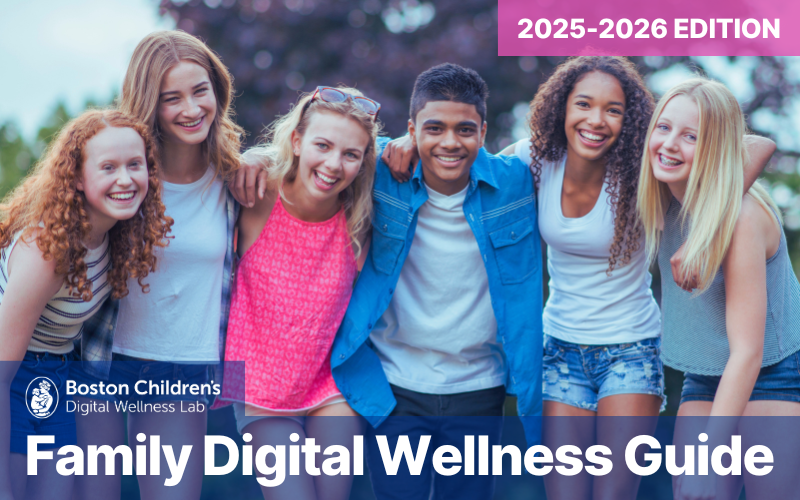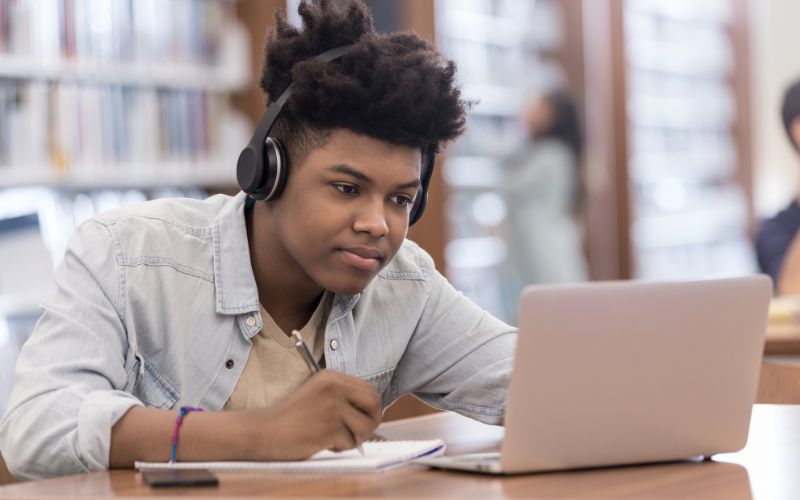Gone are the days when robots were clunky contraptions confined to sci-fi movies. Today, Artificial Intelligence (AI) isn’t just science fiction—it’s an integral part of daily life. AI promises an even more personalized future where technology anticipates our needs and evolves alongside us. From playlists tailored to every mood to educational platforms adapting to individual learning styles, AI is crafting personalized experiences for the new generation. However, amid the excitement surrounding these advancements, concerns have arisen regarding the potential downsides, including privacy and data security, problematic use, misinformation, algorithmic bias, and the social and emotional impacts of AI-driven technologies (UNICEF, 2021). While it’s crucial to address these concerns, it’s also essential to recognize the positive aspects of these technologies to maximize their benefits. As the younger generation navigates technology seamlessly and with familiarity, we must ask: is AI simply a cool tool, or is it fundamentally altering how they learn, interact, and perceive the world?
A United Nations report that polled adolescents in 36 countries found that 93.2% of them had positive thoughts on artificial intelligence and robotics, with 80% of the surveyed young people regularly using AI for everything from everyday activities to education and enjoyment (United Nations, 2022). As adolescents increasingly integrate AI into their daily lives, it prompts us to ponder the transformative potential of this technology. Gradually, AI-driven systems could evolve beyond simple tools to become friends, mentors, and much more as they learn from user interactions, adjust to personal preferences, and anticipate needs. Considering the power of such technology, we must demand careful, intentional design from developers that are tuned for positive experiences.
What is Artificial Intelligence?
Given its wide range of uses and applications, it can be challenging to provide a specific definition for AI. AI can be broadly characterized as the capacity of machines to carry out tasks that normally require human intelligence, such as speech recognition, visual perception, language understanding, and decision-making (Russell & Norvig, 1995). AI may be defined in many ways according to specific purpose and process – historically it was described simply as “the science and engineering of making intelligent machines” (Hamet & Tremblay, 2017) but has a focus today in understanding “machines that can learn, at least somewhat like human beings do” (Manning, 2020).
Recently, the concept of Generative AI (or “Gen AI”) has been gaining significant attention. These systems can generate creative and original content, such as text, videos, and images, based on prompts provided by the user. Generative AI relies on machine learning to understand, predict, and create content from existing data. By analyzing vast datasets, generative AI systems can generate content that appears remarkably natural and realistic or “human-like”. With the popularity of ChatGPT and similar technologies, generative AI has become an increasingly influential force in the digital landscape.
AI and Adolescent Empowerment
Artificial intelligence technologies are transforming the way adolescents engage in self-improvement and skill development. Many personalized learning platforms are powered by algorithms, a set of instructions enabling artificial intelligence systems to process data and make decisions. Using these tools, adolescents can access tailored educational content and adaptive learning experiences that cater to their individual strengths, preferences, and learning styles. These platforms use data analytics and machine learning to track progress, identify areas for improvement, and provide real-time feedback, empowering adolescents to take ownership of their learning journey and achieve academic success (UNESCO, 2023).
One area where these tools have demonstrated incredible promise is in their ability to advance learning and enhance skill development in foreign language education. AI-powered language learning platforms, speech recognition apps, and virtual language tutors enable adolescents to develop linguistic proficiency and cultural competence as they learn a new language. For example, learning platforms such as Duolingo utilize AI algorithms to personalize language instructions based on individual learning styles and progress. Through adaptive exercises, instant feedback, and gamification elements, adolescents can develop linguistic proficiency at their own pace, empowering them to communicate effectively in a globalized world (Pokrivcakova, 2019).
Another study examined the impact of Mondly VR, an AI-powered app that uses speech recognition, chatbots, and augmented reality for an immersive learning experience, on adolescent English as a foreign language (EFL) learners’ vocabulary learning and attitudes (Tai et al., 2020). The findings show that the app helped EFL learners learn and retain vocabulary in terms of word meaning and context-based usage. A similar AI algorithm was used in a different study looking into the employment of an Intelligent virtual learning tutor, Bosom and Smart Learning (BLS) system, to examine students’ learning styles and English proficiency (Ni & Cheung, 2022). The authors suggest that AI can provide students with individualized guidance on assignments, exam evaluation, and after-class activities, which may improve students’ learning efficacy and efficiency to increase their inclination to use the system going forward. Overall, these interactive tools leverage natural language processing and machine learning to provide immersive language experiences and personalized feedback, facilitating language acquisition and communication skills development.
AI technologies also offer a wide range of tools and resources for other areas of adolescent personal growth and skill development. Virtual mentors and coaching apps leverage AI algorithms to provide personalized guidance and motivation, helping adolescents set goals, develop habits, and cultivate resilience. For example, platforms like Habitica utilize AI-powered features to gamify personal development, turning habit-building and goal-setting into an engaging and rewarding experience for adolescents. In addition, emerging research has demonstrated that AI-driven tools can support skills often associated with creativity across different age groups, such as curiosity (Gordon et al., 2015), grit, attentiveness (Belpaeme et al., 2018), and persistence. Even though creativity may manifest differently at different life stages, AI can be used as a tool to support the extension of creativity across age groups (Markauskaite et al., 2022). A recent study showed that adolescents believe that while AI cannot itself be creative, AI tools like music composition software can encourage independent thinking and enhance opportunities for creativity (Marrone et al., 2022). While AI may not be replicating human creativity, its various functions and programming capabilities can inspire adolescents to explore their creative potential and express themselves in new ways.
Conclusion
Rather than only focusing on the possible negatives or hazards linked to AI technology, we can concentrate on harnessing its revolutionary potential for improving the overall wellbeing of all youth. The digital world isn’t just evolving for young people; AI represents a paradigm shift that promises to fundamentally shape how they think and behave. By adopting AI-driven solutions for personal development, we can transcend the constraints of conventional methods and create new avenues for empowering young people. With the aid of creativity tools, mental health support networks, and individualized learning platforms, young people can face the challenges of adolescence with fortitude and self-assurance. Finally, by prioritizing wellness for all adolescents, regardless of background or circumstance, we can ensure that AI technologies are inclusive and accessible to everyone. This means addressing disparities in access to technology and digital literacy, as well as promoting diversity and representation in AI development and implementation. By fostering a culture of inclusivity and equity, we can create a more supportive and nurturing environment where every adolescent has the opportunity to thrive and succeed.
In essence, the journey towards promoting wellness for all through AI is not only about individual empowerment but also about building a more creative, empathetic, and equitable society for generations to come.
Oluwatomilola (Tomi) Idowu was a graduate research intern at the Digital Wellness Lab in 2023-24. She is currently a PhD candidate at Tufts University.








